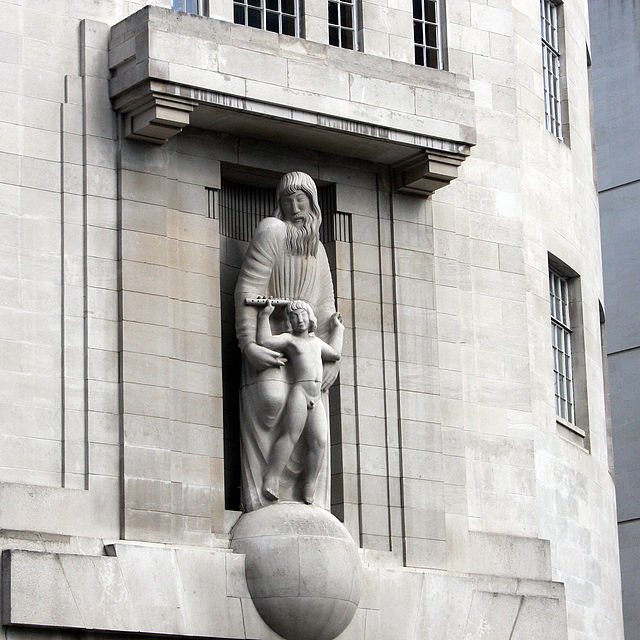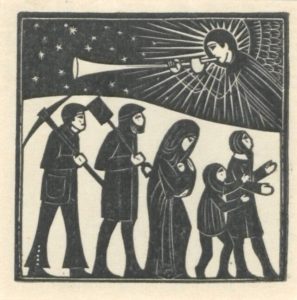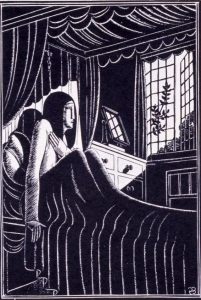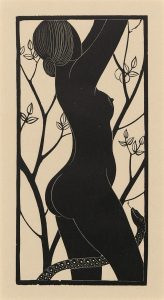
Art Appreciation – October/November 2025
In the October meeting, John gave a presentation on the sculptor, engraver and calligrapher Eric Gill (1882-1940). In his lifetime, Gill gained a considerable reputation not only for his art but also for his philosophy and approach to life. Indeed, in some people’s eyes, he attained the status of a 20th century saint. However, his life – and to some extent, his art – has been cast in a very different light following the biography by Fiona McCarthy, published in 1989. What is now clear is that he was guilty of sexual abuse of his daughters while they were still teenagers, and also of sexual relationships with at least one, and most probably two, of his sisters. He also conducted numerous affairs throughout his life while remaining married to his wife, and also maintaining a strong adherence to his catholic faith. At the very least, it is clear that he was a complex character but one who is still regarded as one of the finest artists of his era.

Gill established an early reputation for his engravings and lettering work for public buildings and memorials, and then moved towards sculpture. He was strongly influenced by the Arts and Crafts movement, by medieval sculptures in his home city of Chichester, as well as temple sculptures in India. His first major commission was to produce the Stations of the Cross for the new Roman Catholic Westminster Cathedral. After the First World War, he produced a great many war memorials, while also producing some beautiful engravings and calligraphy for high quality, hand printed publications of works such as Troilus and Criseyde, The Canterbury Tales and The Four Gospels. Much of his work had religious themes, especially focussing on images of mother and child.
Throughout his life, Gill created a series of communities which included his own extended family as well as his apprentices and some fellow artists and craftsmen. These communities had a strong religious identity, and Gill himself was a member of an order of Dominicans. He was reacting strongly against modern industrial society, and what he saw as the evils of mass production and the loss of craft skills. In common with other artists of his generation, Gill believed that there should be no distinction between ‘artists’ and ‘craftsmen’, and scorned the world of galleries and patrons. He promoted socialist views, although not those of the mainstream left wing parties. He also believed that there should be no distinction between the ‘spiritual’ and ‘earthly’ domains, and this certainly determined his attitude to sexual matters.

His views were a considerable challenge to orthodox views, including those of the Catholic church. He regarded sexual activity as blessed by god, and much of his art reflects his belief that sex should be celebrated rather than in some sense ‘hidden away’. He produced numerous beautiful life studies, often using his daughters and sisters as models, as well as other female members of his communities. What we now know from McCarthy’s biography is that at the time he was producing these images of his daughters, Gill was also having sex with them.
Gill’s reputation was growing, and he was securing high profile commissions for sculptures in prominent locations such as the BBC’s Broadcasting House, underground stations in London, and the League of Nations building in Geneva. He was also gaining a reputation as a designer of typefaces, many of which continue to be used today. Gill Sans is one of the most universal typefaces, appearing on the covers of Penguin Books, the BBC, and even the Flying Scotsman.

Not surprisingly, the group discussed the controversial aspects of Gill’s life and work. There was strong appreciation for his art, and there was little support for those who have argued that his work should be removed from public view. There was recognition that when we view his work, we cannot be unaffected by what we now know about his behaviour, but that should not amount to his work being ‘cancelled’. We can recognise his talent and achievements but we do not need to erect a statue to celebrate his life. Perhaps surprisingly, given attitudes towards other high profile figures whose unacceptable and illegal personal conduct has been exposed, his reputation amongst art historians remains as high as it has ever been.
At our next meeting on Tuesday 11th November members are invited to select and talk briefly about a work of art on the theme of ‘Other Cultures’ or ‘Cultural Connections’.
Lynne Vick, Convener
